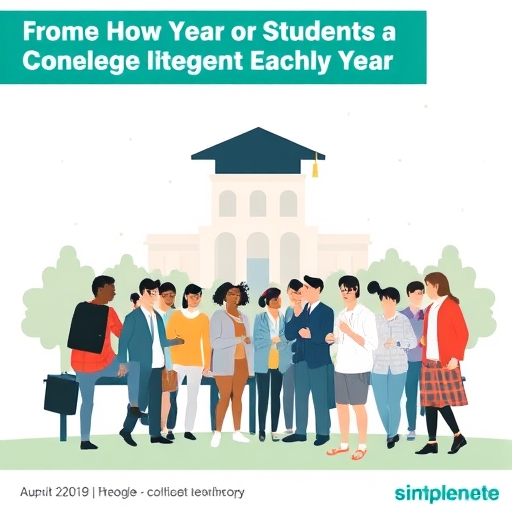How Many Students Go to College Each Year?
The decision to pursue higher education is a significant milestone for many young adults. College serves as a crucial stepping stone toward career development, personal growth, and academic achievement. In this article, we will explore the number of students who attend college each year, the trends influencing these numbers, and how these statistics vary across different demographics and regions.
Understanding College Enrollment Trends
The Growth of College Enrollment
Over the past few decades, college enrollment has seen notable growth. According to the National Center for Education Statistics (NCES), the number of students enrolled in degree-granting postsecondary institutions has increased significantly from the 1970s to the present day. Here are some key statistics:
- 1970: Approximately 7.5 million students enrolled in colleges and universities.
- 2020: Enrollment peaked at around 19.7 million students.
- 2023: Current estimates suggest about 18.5 million students are attending college.
- Economic Conditions: Economic downturns can lead to decreased enrollment as potential students may choose to enter the workforce instead of pursuing higher education.
- Demographic Changes: An increase in the population of high school graduates contributes to higher college enrollment rates.
- Access to Financial Aid: The availability of scholarships and financial aid programs can significantly impact students’ decisions to attend college.
- Online and Hybrid Learning Options: The rise of online education has made college more accessible to a broader audience, leading to increased enrollment.
- Public Four-Year Colleges: These institutions typically offer bachelor’s degrees and are funded by state governments.
- Private Four-Year Colleges: These institutions are funded through tuition and private donations and can be either non-profit or for-profit.
- Community Colleges: These institutions offer two-year degrees, certificates, and transfer programs to four-year colleges.
- Public Four-Year Colleges: 45%
- Private Four-Year Colleges: 30%
- Community Colleges: 25%
- Female Students: Approximately 60% of college students are female.
- Male Students: About 40% of college students are male.
- White Students: 52%
- Hispanic Students: 20%
- Black Students: 14%
- Asian Students: 7%
- Other Races: 7%
- Decline in Enrollment: In 2021, college enrollment saw a significant decline of about 8.1% compared to the previous year.
- Increased Uncertainty: Many students opted to defer their college plans or pursue alternative pathways such as online courses or vocational training.
- Increased Flexibility: More institutions are offering hybrid or fully online programs.
- Greater Focus on Mental Health: Colleges are more aware of the importance of mental health services and resources for students.
Factors Influencing Enrollment
Several factors influence college enrollment trends, including:
College Enrollment by Year: A Closer Look
Enrollment Statistics Over the Years
The following table summarizes college enrollment statistics over the past few years:
| Year | Total Enrollment (in millions) | Percentage Change |
|---|---|---|
| 2019 | 18.0 | N/A |
| 2020 | 19.7 | +9.4% |
| 2021 | 18.1 | -8.1% |
| 2022 | 18.4 | +1.7% |
| 2023 | 18.5 | +0.5% |
Breakdown of Enrollment by Type of Institution
When discussing college enrollment, it’s essential to differentiate between various types of institutions. The three primary categories are:
Enrollment Distribution by Institution Type (2022)
Demographic Insights
Gender Distribution
The gender distribution in college enrollment has shown a consistent trend over the years:
Racial and Ethnic Diversity
The racial and ethnic diversity of college students has also evolved, reflecting broader societal changes:
The Impact of COVID-19 on College Enrollment
The COVID-19 pandemic had a profound effect on college enrollment patterns.
Short-Term Effects
Long-Term Effects
While the immediate impact of the pandemic was a decline in enrollment, some experts believe there may be long-term benefits, such as:
Frequently Asked Questions (FAQ)
How many students go to college each year in the U.S.?
As of 2023, approximately 18.5 million students are enrolled in colleges and universities across the United States.
What percentage of high school graduates go to college?
About 66% of high school graduates enroll in college immediately after graduation.
Are more students attending community colleges?
Yes, community college enrollment has been increasing, particularly as students seek affordable education options.
What factors influence a student’s decision to attend college?
Factors include economic conditions, access to financial aid, family expectations, and personal career goals.
How has COVID-19 affected college enrollment?
The pandemic initially caused a decline in enrollment, but institutions have adapted by offering more flexible learning options.
Conclusion
The landscape of college enrollment continues to evolve, influenced by various social, economic, and technological factors. As we look ahead, understanding these trends will be crucial for educators, policymakers, and students alike. The decision to attend college remains a pivotal one, shaping the future of individuals and society as a whole. Whether through traditional four-year institutions or community colleges, pursuing higher education continues to be an essential pathway for many aspiring professionals in today’s competitive job market.





